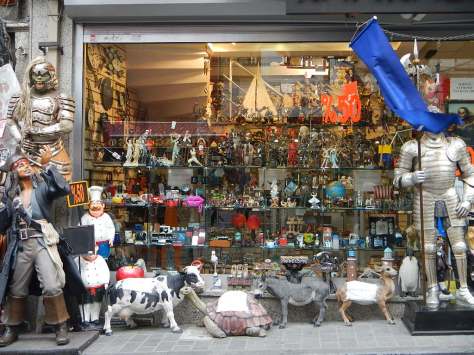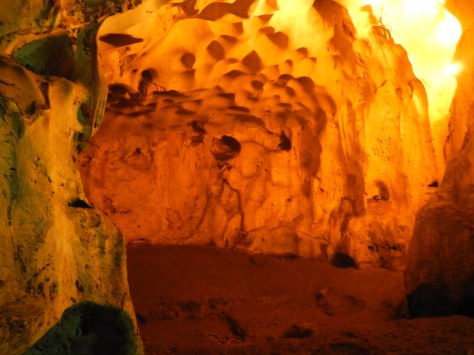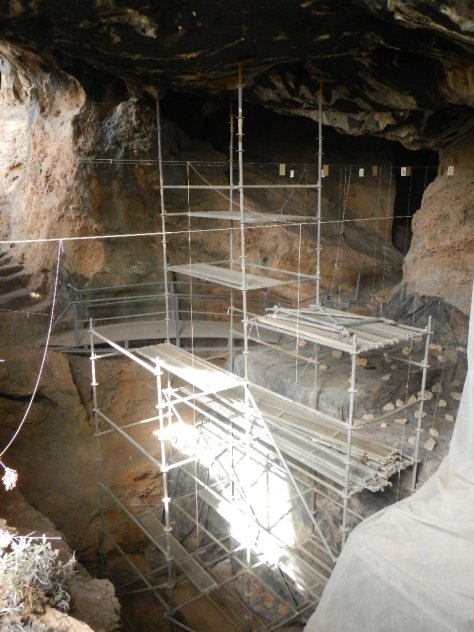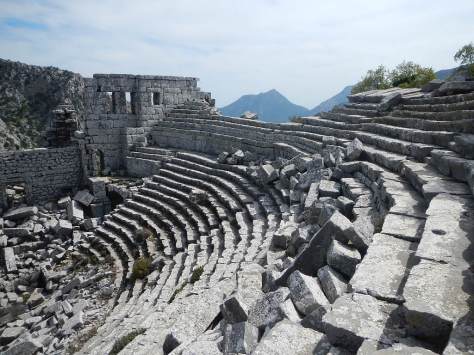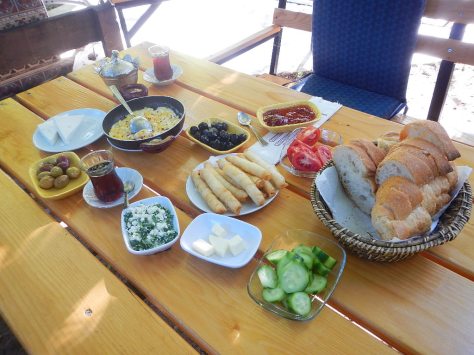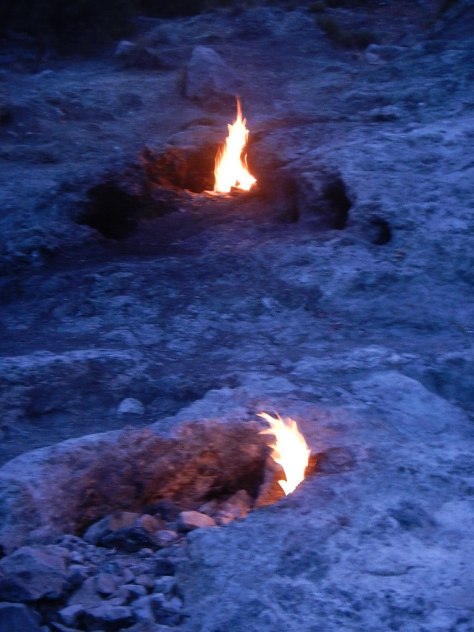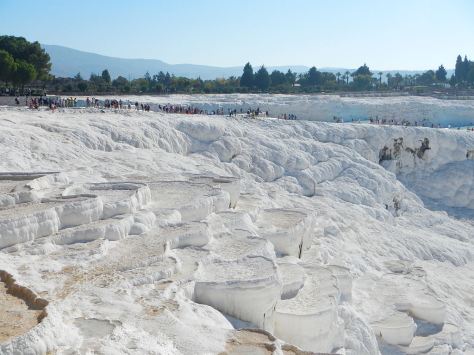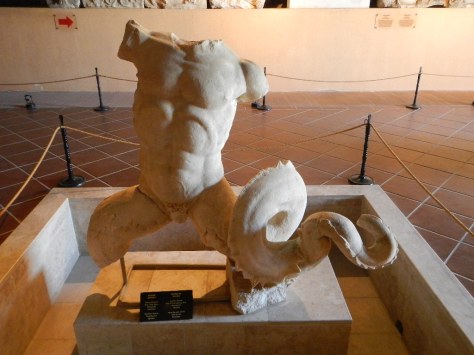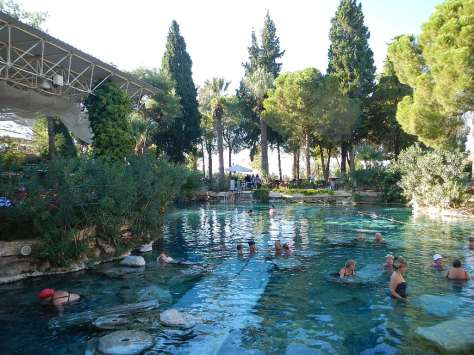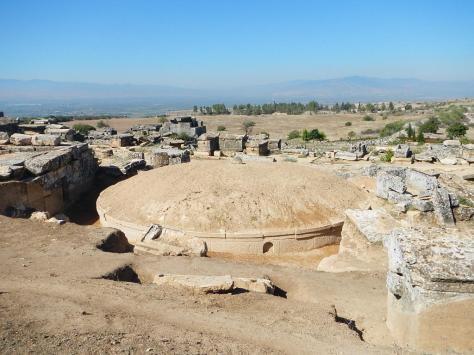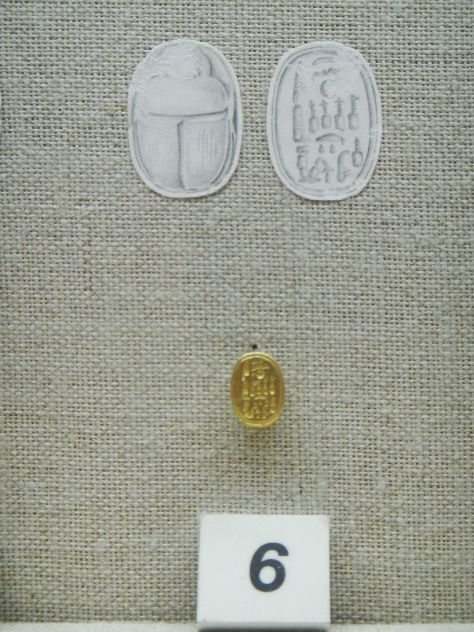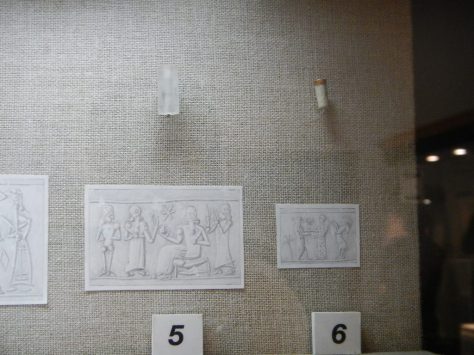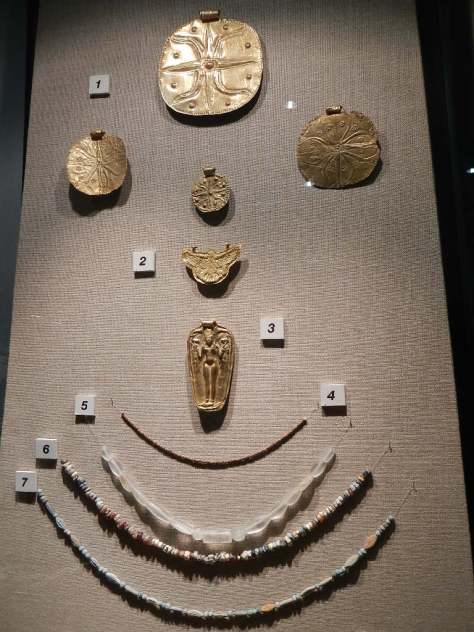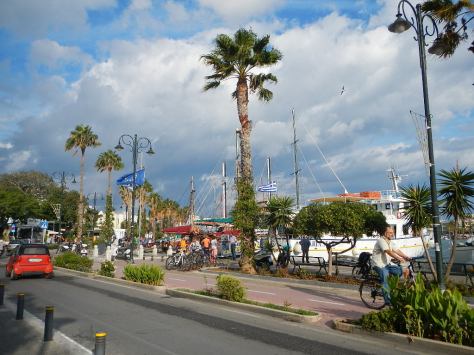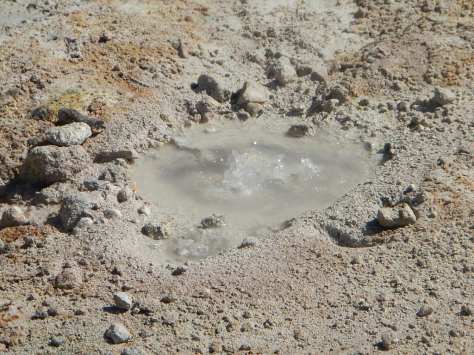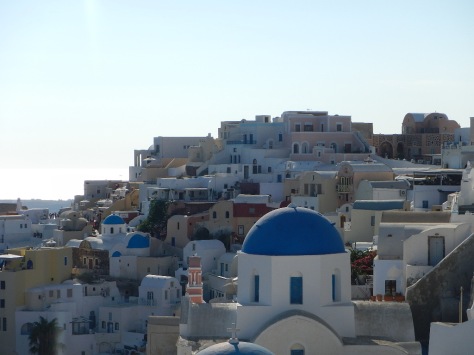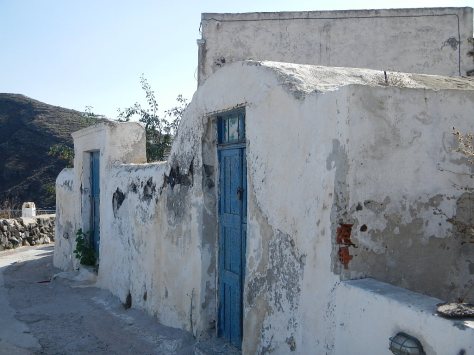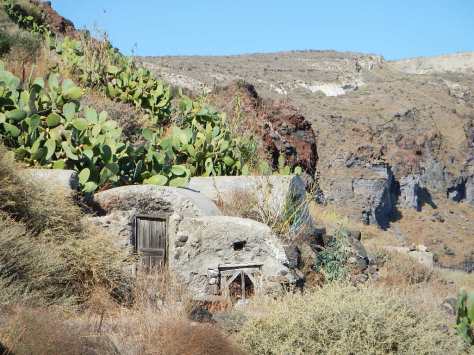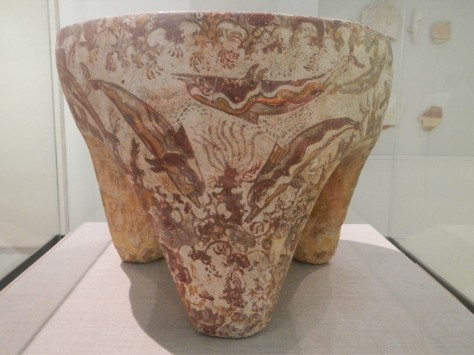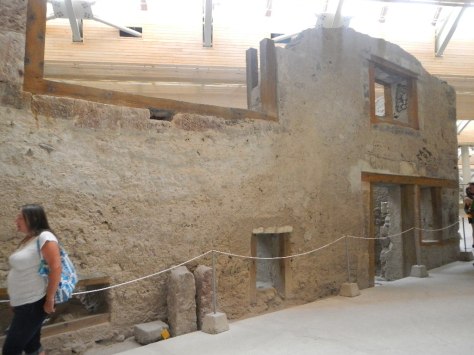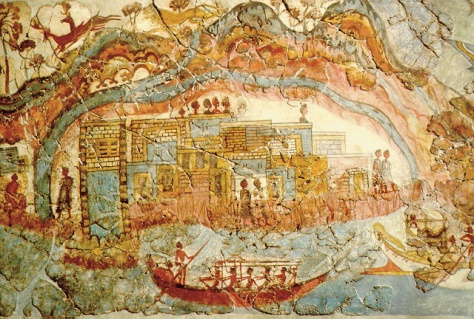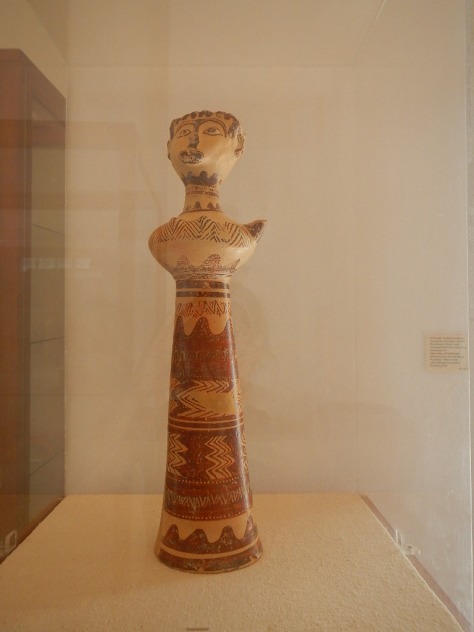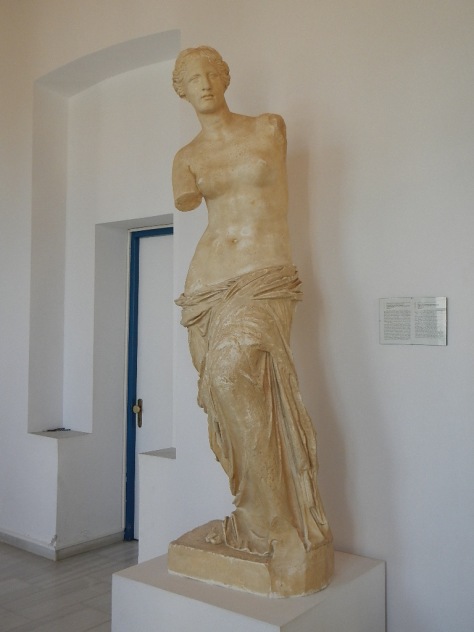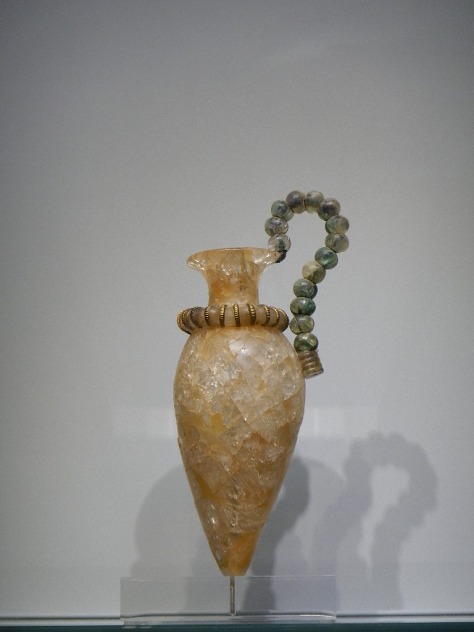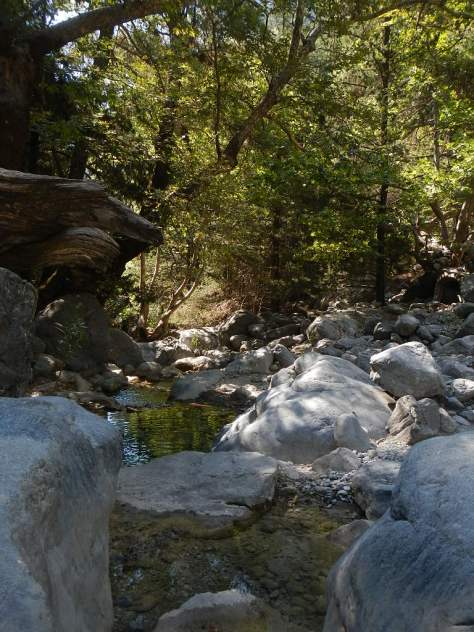It’s hours before sunrise in Istanbul, and I wake up as the first melodic call to prayer of the day seeps through our open hotel window. This is my first time in a Moslem-predominated large city, and there are so many Mosques in the Sultanahmet district, the prayer calls go on for ten or twenty minutes as each Mosque takes their turn. In previous times each Mosque had astronomers to figure out the multiple daily calls – which are timed to the rise and fall of the sun rather than any specific hours on a clock.

In a few hours we’ll leave our delightful little hotel room in a somewhat delightful hotel on a very delightful street of hotels and head up to the rooftop terrace for one of our final Turkish breakfasts. Of all the countries that we’ve visited, I believe the Turkish Breakfast is the most robust and varied. While I do love the Italian cappuccino and croissant, or the Swiss muesli, and appreciate the Norwegian variety of herring, the Turkish mix of olives, halva, cheese, vegetables, fruit, bread, and other seemingly random items makes breakfast a scavenger hunt of tastes and experiences. Our terrace (and our new room) has a panoramic view of the sea – and as we eat we can watch ships leave the Bhosphorus Straight (the small water body between the Black Sea and the Marmara Sea – and head south. Our first room didn’t have a sea view – it had a view of the backs of buildings that faced the sea. When I mentioned that we booked (and paid extra) for a sea view, there was some muttering about the room having a sea view (it didn’t), the hotel being full, and being able to move rooms the next day. I suppose they overbooked the sea view rooms. I suppose it is a minor scam . They are lucky they made it right for us, because I have the power of a bad but accurate trip adviser review at my fingertips.

Speaking of trip adviser, I decided to learn which leather coat stores had good reputations in Istanbul so that if I did decide to buy a coat, I wouldn’t get scammed. Now that we are nearing the end of the trip, it’s time to do some shopping. Not that I necessarily want a leather coat – but I didn’t want to regret not even looking. Yesterday morning, as we were starting out on the “Back Streets of Istanbul” walk in Rick Steves’ book, we ran across the store.
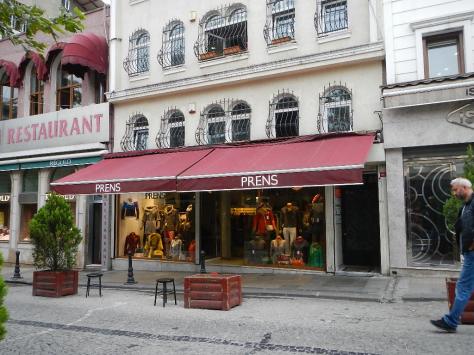
There was a lovely coat in the window, so I wandered right in. This was my second experience in a leather coat shop (the first one was where we had to wait while another couple bought their coats over our objections to even wasting time at the store). I went in knowing that this particular store had better quality goods and slightly higher prices, but in all honestly, if you’re going for a big ticket item, it’s better to make sure it’s authentic and from a reputable place. (I did learn in Antalyla that if a tour person takes you to a store, they get a 50% cut – not sure if that holds for taxi drivers as well, but you are better off making your own way into a store.)
The salesman was very very pleasant. I was the only customer, and he spent a lot of time showing me some very stylish coats. We didn’t talk price. Ken wandered in and was seated and given some apple tea. I was shown more coats. Finally I asked the price. There was actually a price tag – which is supposed to mean a “set price” although the salesman said that they could go 10 percent or so lower. But somehow it went from something like 1000 euros to 400 dollars in a few minutes – which is a little more than 10 percent.
I started to get worried that I was actually entering into a barter – because once you accept the tea and fully enter into bartering for an object, it is polite to actually finish bartering and buy it, and quite frankly, I had only looked at a few coats and wasn’t ready to buy anything. As I hesitated, politely, he leaned over and whispered, “Is there a problem, can you afford it?” Here’s the rub. We’re Americans traveling in Istanbul, so to pretend we can’t afford it would be rude – although I was dressed in grubby clothes (my best but after seven months of travel ….). He then whispered (I think so Ken couldn’t hear), “How much can you afford?”
What went through my mind is – how low can I go without being rude – not how much do I think this jacket is worth – because I had no idea what the jacket was worth. “$300” I whispered back. Why are we whispering – there is no one in the store except the sales people and us. Is he afraid Ken will hear and object to the price?
“The owner is in the store right now and I’ll ask him,” he whispered back. “I don’t know what he’ll say.” At this point I was beginning to feel like I was in a car dealership. He went and talked to the owner, then came back with a calculator, told me he asked the owner how low he could go without telling him my price and showed me a “$290”. Wow – better than my offer.
At this point my common sense kicked in and I told him – honestly – that I promised myself I wouldn’t buy a coat without really thinking about it – so I’d think about it and come back if if that was the coat I decided to purchase. In the meantime, another saleswoman had the coat on and was modeling it to show me how fabulous it was. None of that interaction was a scam, but it was a well-polished sales pitch.
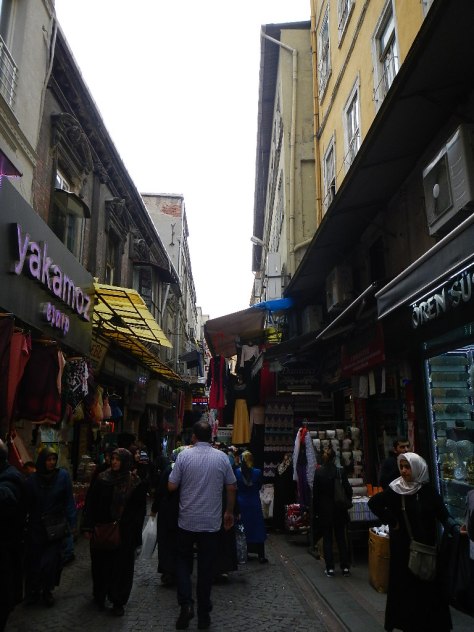
The common pitch to get us into stores is quite simple. If you stop for a second to 1) look at a map; 2) look around, a man suddenly appears at your elbow. “Are you lost, can I help you find something?” he asks in a very friendly way. “No thank you.”
“Where are you from.”
“United States” (or America if they seem to not understand.”) “Seattle”
“Oh America, fantastic, what a great place. I (my cousin, my nephew, my brother’s friend) visited there once – Chicago (California, Georgia).” Some have even been to Seattle.
If they name a city near where we live, I usually smile and say a few more things, but if not I’m starting to walk again. As we start to walk away and end this friendly interaction, there is always the inevitable,
“And can I sell you a carpet? I have a shop just down the street. It has great prices.” It could be a restaurant or a gift shop, although carpet dealers seem to be the most aggressive.
The best way to end the interaction that I’ve found is to be honest and say, “I don’t want to waste your time, we’re really not interested in buying anything.” They are aggressive, but don’t want to waste their time either.
The same interaction can happen even if you don’t stop, but then it usually just starts with “Where are you from.” If you are actually walking it’s pretty easy to just smile and keep going. If you stop and politely answer each time, you’ll never get past the first block.
It’s all very mild, nothing like the aggression we encountered in Rome.
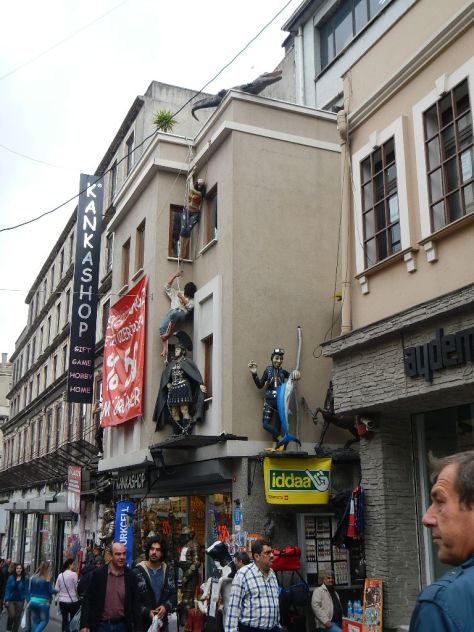
One scam we did encounter was the “exclusive” store. We stumbled into it by accident; Ken has been looking for a wallet. I saw a leather store and wandered in. After explaining I didn’t want a carpet (one floor of those) or a leather jacket (another floor of those) and was only interested in looking a wallets, the salesman led us out the back door, into another building, up some stairs, and into an unmarked showroom with about four sales staff. It was full of high end designer knock off purses. As Ken looked at the wallets I wandered over to the Louis Vuitton purses – there is a particular style I recognized from Bodrum – and asked the price. 300 euros for a knock off of a 3000 euro purse. I asked if the price was fixed. That’s a polite way of asking if the store bartered, or was a more modern type of store. Fixed. The sales woman explained that in the Grand Bazaar they look you up and down and decide what sort of price you can pay and then tell you a price, but fixed was a much better way of setting prices. She then went on to explain that their store had a reputation for quality and most of their customers were word of mouth. Quite frankly, with the unmarked door, I suspect most of their customers are led into the store by a tour guide, and people are so excited to get access to the high end knock offs, they don’t question the price. I saw the exact same purse – same high quality knock off in a street level store in the bazaar behind the Blue Mosque – same starting price, but the salesperson said the price was negotiable. Beware of the “private store” scam.
PS – turns out that particular bag is the much sought after “Capucines” – the bag that LV launched with a huge public relations campaign which included putting the bag in the hands of Angelia Jolia and Michelle Williams. It’s so coveted that have a huge wait list. I wonder if I was drawn to it though that heavy (but subliminal) marketing campaign – another scam?? Not that I was ever interested in actually buying it.
Those scams are minor, but Istanbul can be a dangerous place for the unwary. While wandering through a center town cemetery, I started talking to a youngish (30s) man from Toronto Canada. He was travelling alone. A very pleasant and talkative man, he immediately started telling me about how he was scammed.

He was in the center part of town in the evening taking photos of the Hagia Sophia when another man started talking to him. The other man was from Dubai, and spoke very good English. After talking for a while, the man suggested they go for a beer. They took a short taxi ride to a club – the man paid for the taxi – acting like a big spender. At the club (where there were other people) the man told him to squeeze into a booth – insisted on it – so that he was sort of trapped in. Then two ladies joined them. At that point the Canadian was starting to realize what was happening, and when the bartender asked if they wanted anything to drink, he purposely got the Dubai man to order. Four drinks were ordered. The men had beer – the ladies had some sort of drink in a bottle with no label (probably water.) Then they asked for a second round – and the Dubai man told the Canadian he had to order this time. The Canadian man protested and said he wasn’t there to meet the ladies – he had just come for a beer.
The Dubai man got mad, and yelled at the Canadian telling him he was responsible for paying for his drink and his ladies’ drink. The Canadian agreed just to get out of there – and when the bill came it was 1000 euros – so around $1400. At that point there were no other customers in the club. He emptied his pockets – 50 euros and 50 plus 15 Turkish lira and a pack of gum. No credit cards. The man yelled at him for not having more money. He opened the pack of gum to see if there was money hidden in there, and then took a piece of gum. He took all the money except the 15 lira and told the Canadian to leave. He left. He found himself on a deserted street in a deserted part of town, separated from the main part of town by a highway. No taxis. After walking for mile or so he found a bus, but the bus driver told him to take a taxi. He finally found a taxi. He didn’t remember where the club was, or how to get back to it, so he couldn’t file a complaint. He was lucky. It could have ended up a lot worse.
I don’t want to make it seem that all of our time in Istanbul has been avoiding scams. This is a wonderful city, full of a huge diversity of people and neighborhoods, with endless things to see and do.


The Hagia Sophia was astonishing. To think that a building with a that large could have been built in the sixth Century – a feat not matched again until the Renaissance some 1,000 years later. The mosaic in the photo above has an interesting back story. Empress Zoe was the daughter of an Emperor with no male heirs. Her first husband (the man pictured to the right of Christ, left on the mosaic) died a few years after they were married in his bath. She married her young lover, Michael IV (and the writing above the Emperor’s head was modified with the new name.) A few years later he was dead as well. His nephew seized power and sent Zoe into exile – and scratched away her face in the mosaic. She found a way to return to power by the time she was 65, this time married to Constantine Monomachus – so for the third time the writing above the Emperor’s head was changed, and this time Zoe’s face was restored to her youthful beauty. (Source – Rick Steves’ guidebook.)

The Harem of Topkapi Palace was another must see. It was the residential portion of the palace where the Sultan, his wives, favorites, and other slaves (concubines) resided. Each Sultan could have up to four wives and four favorites. The rest of the concubines were servants – not mistresses.
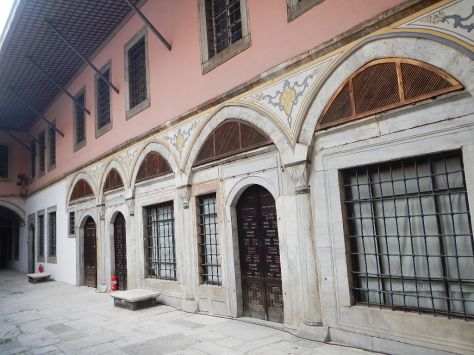
The system was meant to produce male heirs to continue the dynasty. It did work – there was always a male heir – too many in fact. Tradition was that the extra little princes were kept locked away in the Princes’ rooms – behind the iron grills. When their brother rose to power, they were often strangled so that the succession would be clear – especially if they were brothers with another mother – because the Sultan’s mother co-ruled. In some cases – I suppose if the Sultan hadn’t produced any male offspring yet (some Sultans were very young) the “locked away” brothers inherited the thrown without ever seeing the outside world beforehand.

The Mosque I enjoyed the most was the one sponsored by Suleyman the Magnificent. Built almost 1,000 years after the Hagia Sophia, architect Minar Sinan created a dome of enormous proportions supported by arches and strong pillars rather than thick walls. This allowed the interior to have loads of windows and natural light. Sinar (1489-1588) was a contemporary of Michaelangelo and Leonardo Da Vinci and this Mosque was one of his lasting legacies.
Suleyman may have been magnificent, but his personal life was a little less straight forward. He fell for one of his concubines – when she managed to make herself noticed by laughing in his presence. His primary wife didn’t think the girl was much of a danger – and called her a “slave” and hit her. Suleyman was less than pleased and banished that wife. After Roxelana bore him a son, she convinced him to marry her. At that time it was unheard of for a slave concubine to be raised to a legal wife. That only left the son from the first wife standing between Roxelana placing her own son on the throne, so she convinced Suleyman to strangle his heir. She bore Suleyman four sons and one daughter. Two of the sons died of natural causes, and Suleyman had one strangled, but the final one succeeded him.
Roxelana ruled behind the scenes as Suleyman turned to her for advice. He outlived her, and built her a huge mausoleum behind the mosque. His own – larger – mausoleum sits beside hers. (Source – Rick Steve’s guidebook).


